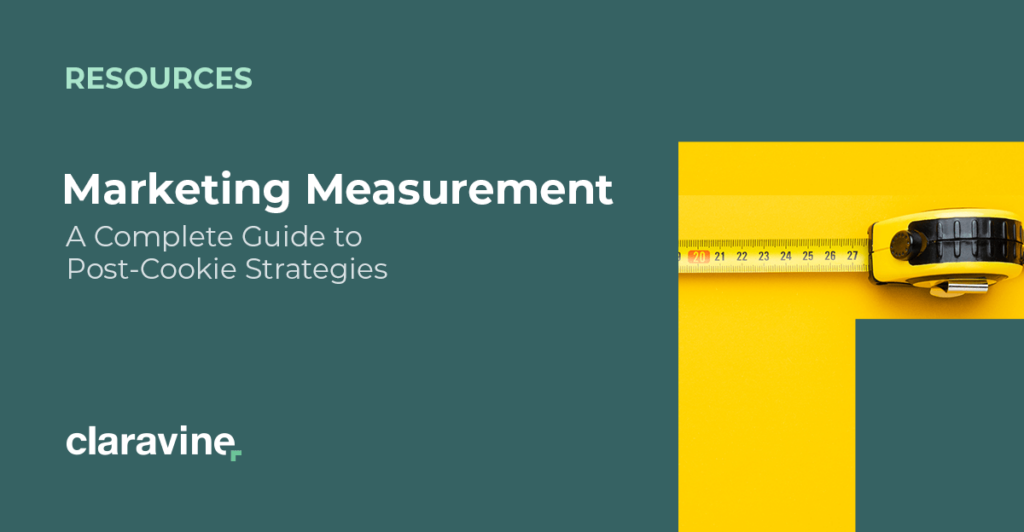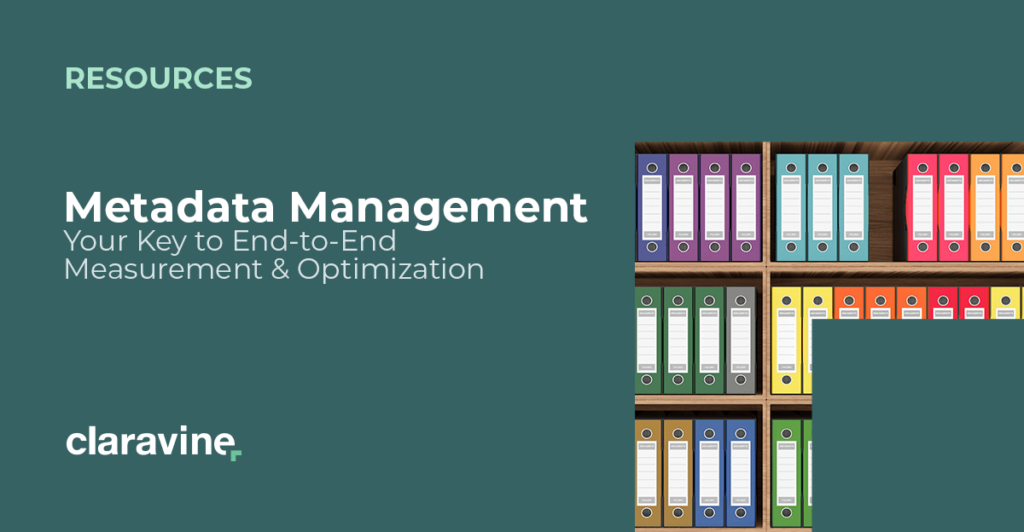Bad Marketing Data Won’t Just Sink Your Campaigns — it Can Scuttle the Business

According to Gartner, bad data costs the average organization nearly $14 million a year.

Bad marketing data is undoubtedly a leading contributor to this problem and will remain so as companies collect increasing amounts of data about their audience, behaviors, and marketing activities.
Of course, crummy marketing data doesn’t just hurt your marketing efforts — it infiltrates every department, creating a chain of errors that puts the entire organization at risk.
We’re going to explore how bad marketing can impact eight key departments. But first, let’s define “bad marketing data” and review the consequences of relying on it for creation and decision-making.
Understand the Ripple Effects of Bad Marketing Data
What Qualifies as “Bad” Marketing Data?
Marketing data is the information collected from any touchpoint or interaction between prospects or customers and a brand. It includes customer information, sales metrics, market research, competitive insight, commercial transactions, marketing metrics, and plenty more.
Bad or poor quality data describes information that is one or more of the following:
- Incomplete
- Inaccurate
- Irrelevant
- Non-conforming
- Duplicative
- Lacking standards
Bad marketing data is also the data that’s being collected but not used — data that sits in a SaaS platform or warehouse, siloed from the teams and tools that can make use of it.
What are the Consequences of Bad Marketing Data?
Data can be compromised in numerous ways — lack of integration, inconsistent collection protocols, poor migration, and data decay. Understandably, it’s challenging to ensure data quality — let alone data integrity — throughout the data lifecycle.
Failing to improve data quality and integrity can have serious consequences for an organization that compound over time. Here are a few:
- Lost productivity and rising inefficiencies
- Poor, slow decision-making
- Public, customer, and employee mistrust
- Lost revenue and opportunities for growth
- Costly mistakes
- Reputational damage
- Compliance fines
- Loss of customer loyalty; employee attrition
- Relationship damage with suppliers and partners
And while you’re probably thinking about all these problems in the context of marketing, the effects of bad data won’t remain in that silo, even if your tech, teams, and workflows do.
The Impact of Bad Marketing Data on 8 Key Departments
Implementing enterprise data management and governance is a massive undertaking, so it’s not surprising that 70% of organizations say they don’t have a mature data strategy in place.
Let’s explore what that could mean for key departments, specifically concerning a lack of marketing data standards.
1. Human Resources
Marketers must have a comprehensive view of the customer journey to create effective marketing strategies. Likewise, HR must have the same perspective of the audience they serve: employees and prospective employees.
Without accurate data and a marketing taxonomy, HR professionals won’t have insight into the employee journey, hindering their recruiting and employer branding efforts
For example, it’s challenging to obtain accurate recruitment metrics such as the source of job applicants without good metadata management. And if you can’t determine whether your hires originated from Glassdoor, LinkedIn, or internal referrals, you won’t know where to focus future recruitment efforts.
Instead, you’ll waste time and advertising dollars on channels that haven’t delivered strong applicants.
 The same concept of taxonomy applies after recruiting, at the other end: turnover. Claravine’s Karen Boyd (a business admin guru who handles everything from accounting to operations to HR) embraces taxonomy informed by, but expanding beyond, marketing.
The same concept of taxonomy applies after recruiting, at the other end: turnover. Claravine’s Karen Boyd (a business admin guru who handles everything from accounting to operations to HR) embraces taxonomy informed by, but expanding beyond, marketing.
“In HR — and finance, too — intentional, thoughtful taxonomies drive efficiency and alignment across units,” she explains. “When we’re measuring something like turnover, it’s incredibly difficult to get reliable metrics when definitions are different across teams or employee journeys aren’t accurately tracked across touchpoints and milestones.”
Just like marketers, HR professionals are tracking and reporting, attempting to make decisions based on data. Plenty of marketing concepts, especially around user journeys, landing page behavior, source/channel optimization, and ad effectiveness, are top-of-mind for HR.
2. Finance
No other department demonstrates the interconnectedness of organizational functions more than finance. Modern finance roles aren’t just focused on compliance and reporting. In data-driven organizations, they’re empowered to drive change by creating cost savings, promoting collaboration across departments, and advocating growth opportunities.
But achieving both tactical and broader objectives requires a comprehensive view across all departments and access to reliable data. Any bad data that sneaks its way into the organization will eventually impact finance.
For example, improper tracking methods can misrepresent revenue from a social media campaign and later impact revenue reports, marketing ROI, and sales forecasts.
They can also impact budget approvals. If a marketer comes to finance to sign off on marketing and ad spend, they better be ready with reliable data to back up their request. And they better trust that data enough to come back in a few months to prove the spend was accurately applied and worthwhile.
The issue of data duplication can be a costly one for finance, too, as they reconcile overlapping spend reports or try to make sense of attribution reports that reference numerous touchpoints or conversions.
3. Sales Operations
Lead management, sales automation, compensation plans, data analytics and reporting — these are just a few ways sales ops enable salespeople to be productive and successful.
Unfortunately, bad data wastes an average of 27.3% of a sales rep’s time and makes it difficult for sales ops to fulfill their responsibilities. For example, if sales data (i.e., volume, SKU, account rep) is inaccurate, sales ops can’t measure the success of a product, campaign, or key sales and MarkOps KPIs.
And if they can’t measure effectiveness, they won’t be able to identify and improve ineffective sales processes or monitor an individual rep’s performance to provide necessary incentives or support.
 Claravine’s Chief Revenue Officer E.J. Freni explains what’s at risk when a sales department’s go-to-market strategy and messaging is informed by bad marketing data.
Claravine’s Chief Revenue Officer E.J. Freni explains what’s at risk when a sales department’s go-to-market strategy and messaging is informed by bad marketing data.
“Bad marketing data is going to send sales down the wrong path — which means major opportunity loss,” he says. “Time is money in sales. Every minute the team is chasing the wrong market segment or using the wrong messaging, they’re lighting money on fire.”
In every organization, especially enterprises, the stakes are rarely higher than in the sales operation.
“If the data I’m getting from marketing isn’t 100% on-point, it’s misinforming my go-to-market strategy and handicapping our execution.”
Freni elaborates that bad marketing data will absolutely impact lead generation, which means a sales pipeline that struggles to engage the right people — if it gets filled up at all. He relies heavily on marketing data to know which channels and tactics are working.
For instance, if webinars, in-person events, 1-on-1 meetings, or large conferences are performing best. Each style of outreach has its own nuances and needs for planning and budgeting, so bad marketing data can be drilling holes in the hull of the sales ship before it even leaves the port.
4. Ecommerce
We’ve all visited web stores that offered a terrible UX, whether they were poorly laid out, difficult to navigate, or missing key specs in product descriptions. If we ended up making a purchase, we probably didn’t make a return visit.
And while crummy visuals can turn off visitors, inaccurate data and poor data standards are really to blame. The digital customer experience relies on standardized data and taxonomies accessible to every team involved to ensure a positive pre- and post-sales experience. Data standards are essential for providing:
- Personalization
- Smooth navigation
- Description accuracy
- Product findability
- Inventory monitoring and availability
- Product fulfillment and logistics communication
- Returns coordination
Data collected by marketers on consumer behavior across the website and external touchpoints can be leveraged by ecommerce departments to make inventory and future product decisions. And if that data is bad, the merchandising decisions stemming from them will also be bad. The potential in — and risks of — predictive merchandising based on marketing data can be million-dollar scenarios. A professional website builder will of course try to cover all your bases when it comes to onsite collection, but predictive merchandising will require aggregate data from other touchpoints and departments. So ensuring website data can be understood in both directions is paramount.
That’s even without mentioning the risk and possibilities of driving the right traffic to an ecommerce site, which will of course hinge on SEO and marketing data. Therefore, the role of data standards for digital merchandising encapsulates a ton of marketing data, not just product data.
5. Compliance and Legal
The introduction of strict consumer privacy laws is changing the ways marketers can collect and leverage customer data. And while the push for establishing solid data standards isn’t new, it’s taking on new urgency.
In the past, sales reps only hurt their own productivity and quota goals if they used outdated or inaccurate marketing data in their prospecting efforts. Today, there could be severe repercussions.
For example, texting the wrong number (someone who didn’t agree to receive messages via SMS) violates text messaging laws and could result in legal action and fines.
That “wrong number”? That’s bad marketing data. It can also cause improper retargeting, emails without opt-ins, and other marketing that crosses what a consumer sees as a strict line of privacy.
The demise of third party cookies, subsequent rise in necessity for first party data, and an overall shift towards more privacy-friendly marketing mean there’s a lot at stake when it comes to compliance and legal.
Marketing data can make compliance and legality smooth and informed, or it can cause bumps in the road that derail the business and cost lots of money to rectify (fines, legal fees, human resources, and the like).
6. Business Intelligence and Analytics
Business intelligence is a process that uses data to deliver actionable insights to help stakeholders make better business decisions. The role of analysts is crucial in the practice, and often overlaps between making sense of marketing data and combining other company-collected data into dashboards that tell bigger stories.
It helps organizations understand their audience, uncover behavioral trends, measure marketing effectiveness across channels, and reveal insights on the competitive landscape. Understandably, its insights are only as good as the underlying data — and most of that data comes from the marketing realm.
For example, bad marketing data can lead to poor allocation of marketing spend and missed opportunities for growth. It could direct business strategists to break into new, seemingly opportune regions that in reality lack the demand they need to make profits.
In addition, devoting time and resources to make unreliable data into usable inputs for BI (with processes such as ETL) can dramatically slow the speed to insight. To the latter point, the role of data standards holds a specific role for business intelligence and analytics professionals.
So not only can bad marketing data misinform those who are tasked with guiding the most important data-driven decisions, it can eat up their (very valuable) time and resources for cleanup instead of for revenue-driving analyses.
7. Procurement and Supply Chain
Most companies are trying to slash costs wherever they can, and procurement shoulders a lot of that burden. But they’ll have a hard time increasing efficiencies and saving money if they can’t rely on the accuracy of the product, customer, and supplier data — a large portion of which stems from marketing and CX sources.
Here are some potential repercussions of bad marketing data on the professionals that manage buying and supplying:
- Missed cost savings opportunities through price negotiation, switching between suppliers, and source consolidation
- Unpaid invoices and duplicate payments through vendor master file inaccuracies
- Inability to make decisions that mitigate risks, leading to sourcing products from risky locations or failure to respond to financial crises, natural disasters, and more
- Poor forecasting that leads to higher inventory carrying costs
That last one has a pretty direct link to the earlier points around ecommerce — if you’re making predictions to gain a market edge, but those predictions are fueled by unreliable marketing data, you’re going to have a bad time (and lose money).
8. Customer Service
When a customer reaches out to customer service, ideally the rep can address their inquiry quickly and completely. However, if they rely on inaccurate customer data, the interaction can go south fast.
For example, if a rep can’t access a customer’s information quickly due to an earlier marketing data entry or collection error, call time and time to resolution may increase. Or, if the customer’s profile isn’t informed by website behavior or marketing campaign touchpoint data, the rep might be flying blindly as they try to cobble together the scenario (as explained by a probably unhappy customer).
Marketing and its data are also in play when it comes to attracting, acquiring, and retaining the right customers. So if marketing is operating with bad data, they may be dropping the ball on product-market fit and getting the wrong customers signed up in the first place. Then, lo and behold, those customers have a not-so-pleasant experience because they’re not here for the right reasons.
If marketing data quality issues are pervasive, they can impact the productivity of the entire customer service department and damage brand perception, satisfaction, and reputation.
How to Protect Everyone from Bad Marketing Data: Start at the Source
Eliminating — or at least drastically reducing — the load of bad marketing data within an organization has to be a proactive approach focusing on the source of the data. Reactive efforts towards cleaning and restoring data are only going to kickoff an endless game of catchup that drains resources and burns both time and money.
The path towards superior marketing data can be laid at the feet of everyone who creates, collects, manages, and analyzes data from marketing and beyond. It requires a data management strategy that looks at the structure and format of data itself, elevating the role of data standards — a common, defined, and information-rich data language.
With data standards defined, applied, and governed, everyone in the organization has the visibility and familiarity to avoid bad data (and spot minor issues well before they become org-wide problems).
You can reduce the amount of bad data and its impact on your business by improving the quality of your marketing data. Investing in data integrity empowers a data democracy in which everyone can make decisions backed by data they can actually trust.
The positive effects of data integrity can make marketing the hero again, as benefits spread throughout the company and into the bottom line.
Case in point: data integrity, pursued via data standards, empowered a boon in effectiveness and customer experience improvements for Under Armour while increasing operational efficiency and enabling the launch of next-gen consumer touchpoints. Watch the video below to learn more.















